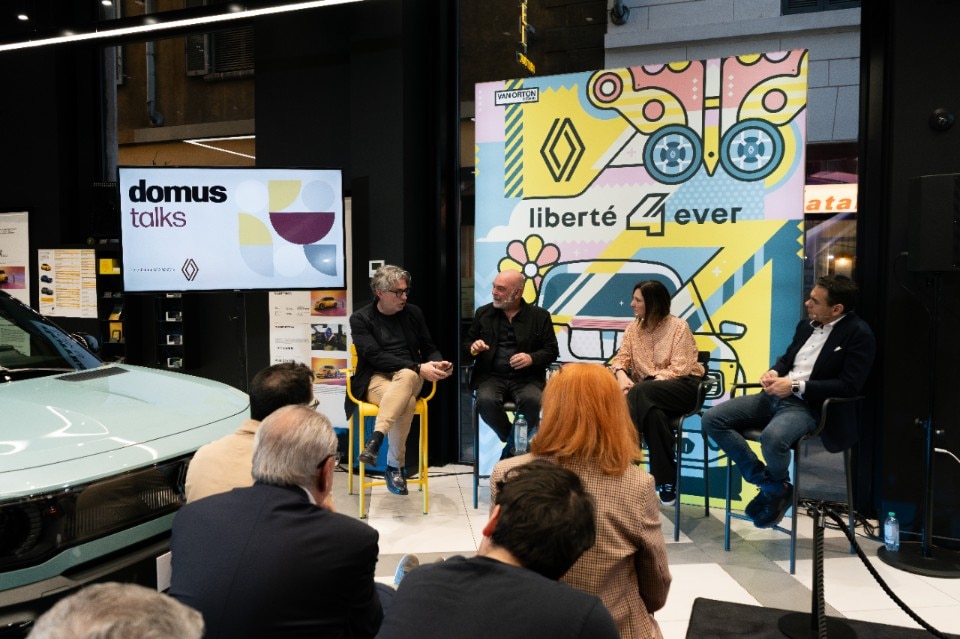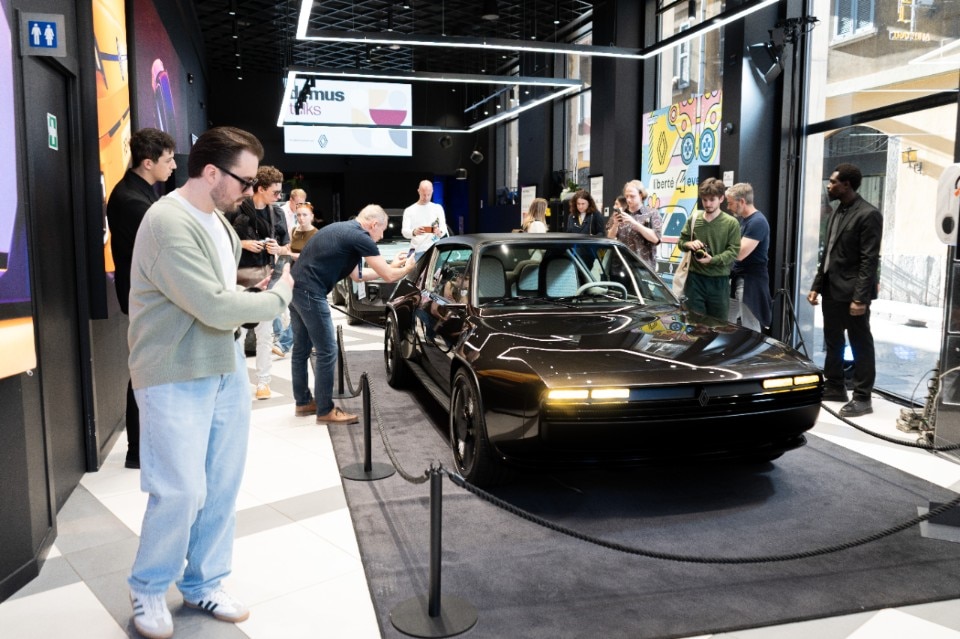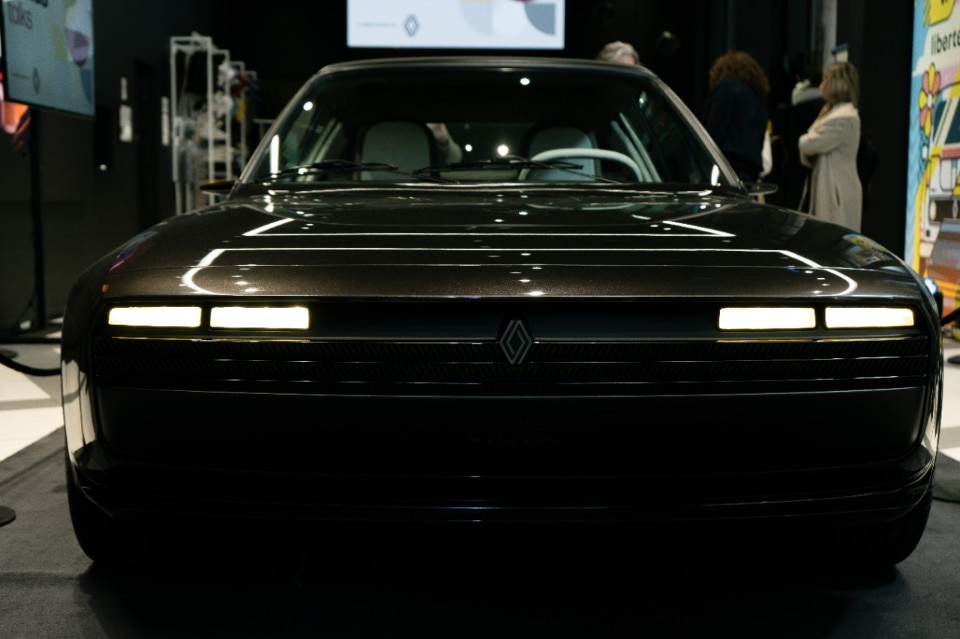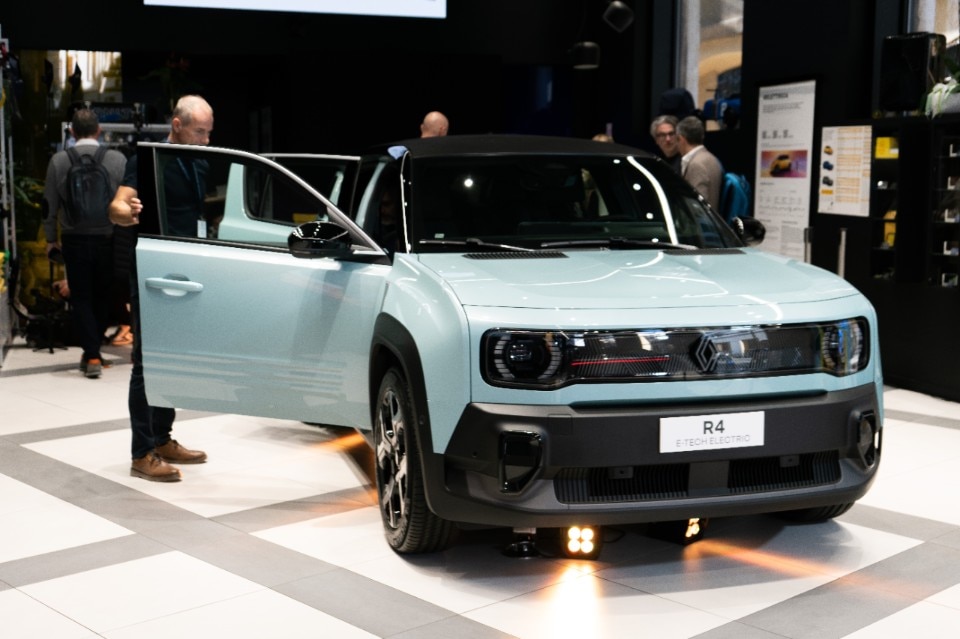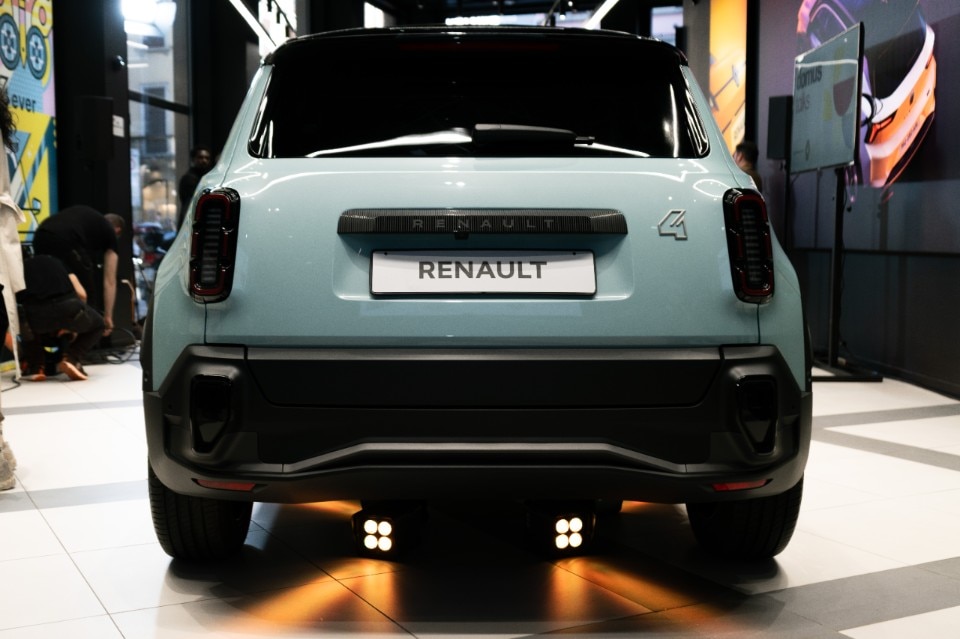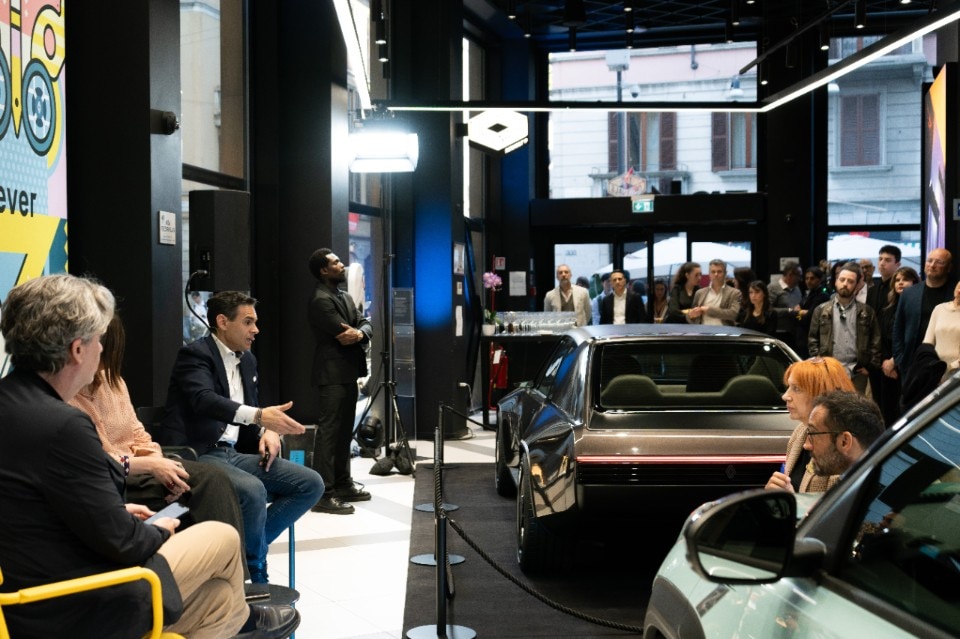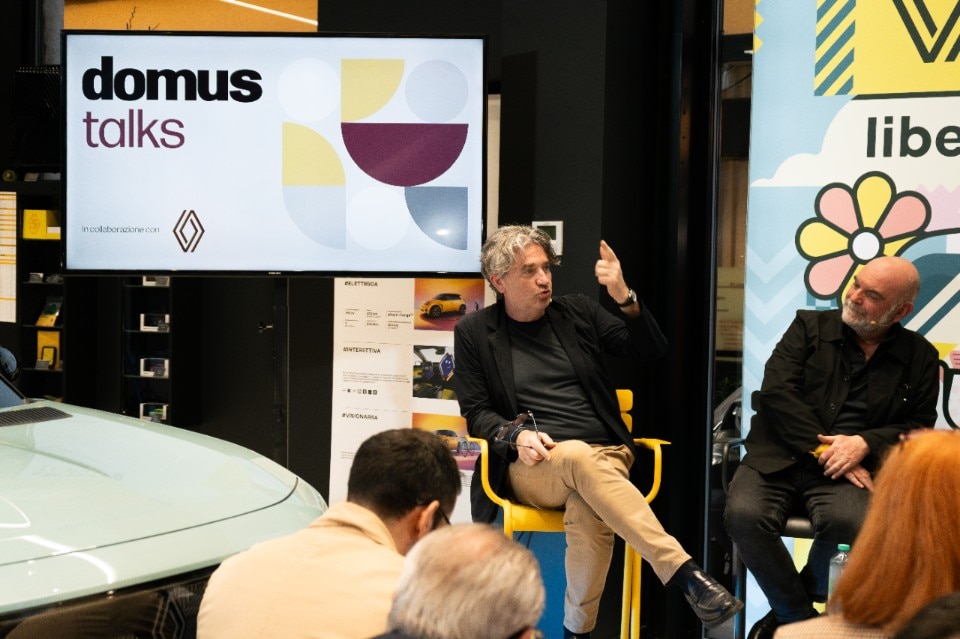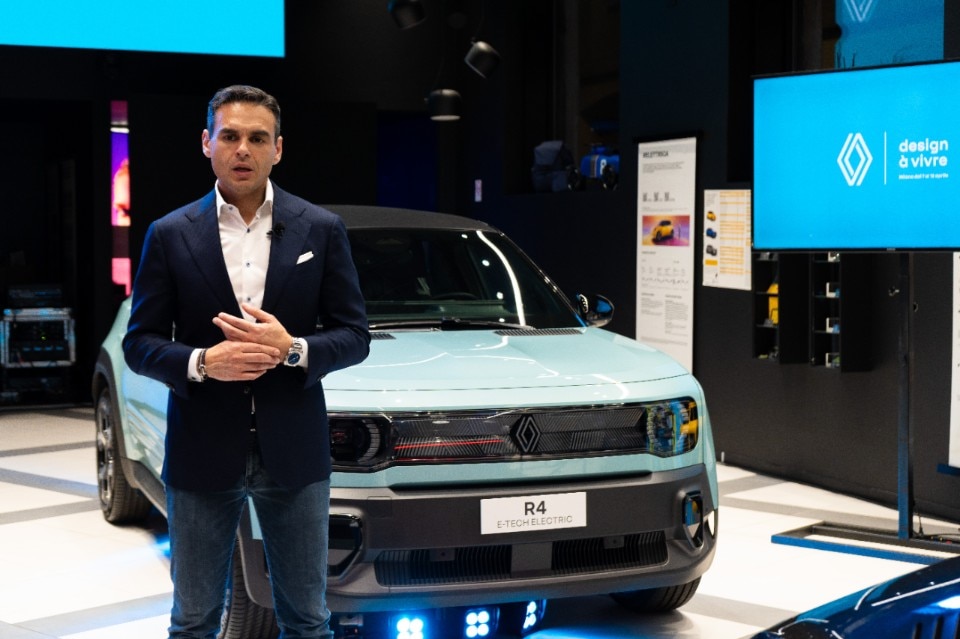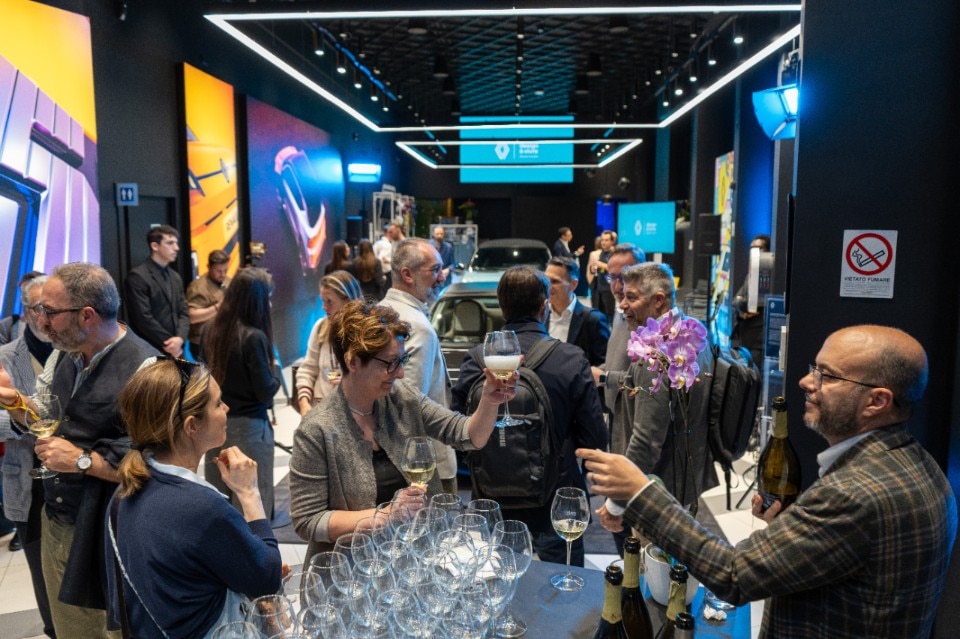Power banks connected to the city grid and computation control units providing public data centers with informations related to traffic, environment and critical issues. At the Domus Talk organized with Renault, the role of EVs as accelerators of urban cognitivity emerged.
Milan Design Week 2025. It’s a summer anticipation, the sun warming up the aperitifs that kick off the Fuorisalone weekend along Corso Garibaldi. Among spritz, multi-ethnic fingerfood and stuffed focaccine, however, there is also room for reflection promoted by Domus. The rnlt© store in Brera hosts the Domus Talk “Quale smart city ci attende. Tra intelligenza progettuale e non luoghi” the discussion dedicated to the urban present and future, with a special reference, ça va sans dire, to mobility and the automobile. Protagonists of the round table moderated by Domus editorial director Walter Mariotti are architects Floriana Marotta of Mab Arquitettura and Claudio Saverino of Saverino Vudafieri Partners, and master of the house Vittorio D'Arienzo, product global leader of Ampere, the Renault Group division dedicated to the development of electric vehicles.
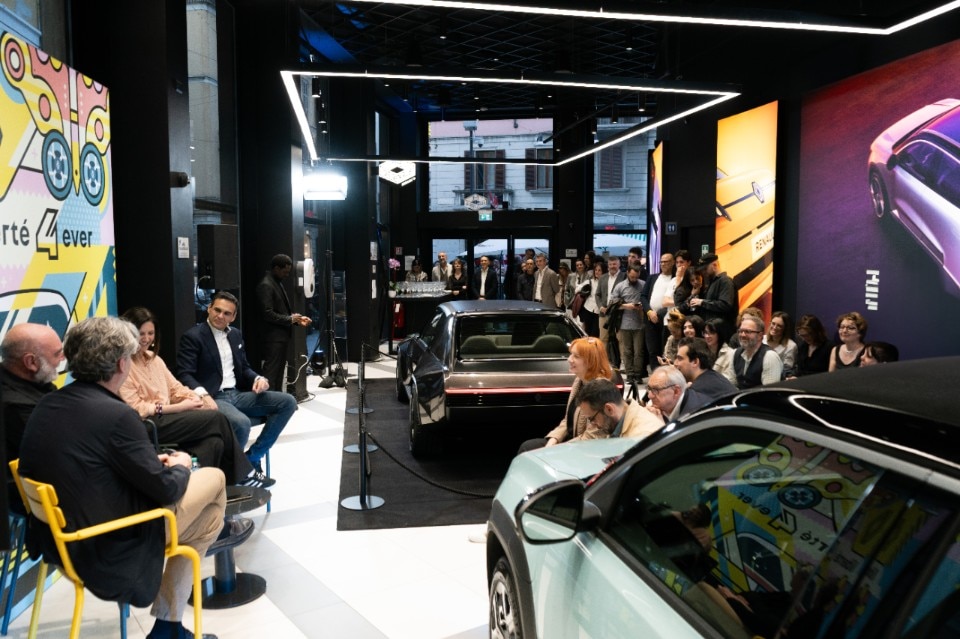
Renault's own contact person is the one to kick off the conversation by explaining how electric cars - which all participants agree is the way forward at least until technology presents an alternative - will soon be a tool at the service of the smart city, providing the city infrastructure with its power bank, which can supply the urban grid when the car is parked, but also its computational brain, which will provide public power data centers with a large amount of information related to flows, structural criticalities, environmental parameters and much more. The car emerges in this sense as a tool to serve the administration and therefore the community.
Floriana Marotta speaks on the identity of places. Artificial intelligence has great potential, especially when its nerve centers are linked together, but a great design and vision effort is needed to prevent technology from homogenizing and depersonalizing places. The private sector is gradually replacing the institutional actor in setting urban planning guidelines, and although there are several virtuous examples of that, there is a need for the public to regain leadership when it comes to thinking about spaces for the citizens of today and tomorrow.
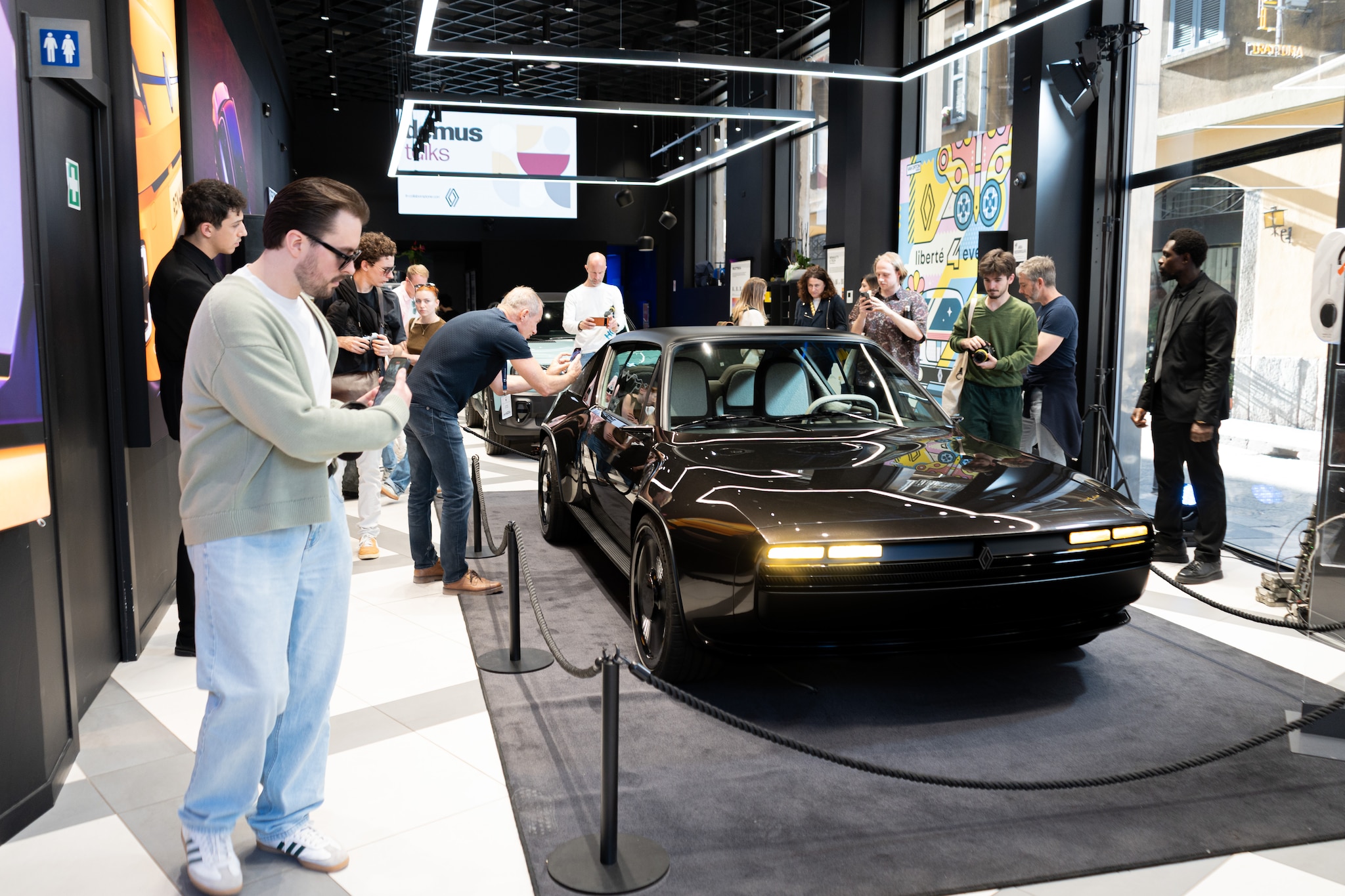
The cities of the 20th century were built, in some cases knowingly in others unknowingly, to the measure of the automobile, Saverino reflects. The car has been the linchpin of urban planning in the last century, a paradigm that has made public spaces of relationships, squares, courtyards, parks, arcades, almost disappear. Today, when 30 million Italians - and 55 percent of humans in general - live in a handful of metropolitan areas, we have reached a point of no return, and it is crucial to rethink the very concept of urban mobility at its roots. Keeping in mind, as Mariotti points out, that with the advent of electric and Artificial Intelligence, the automobile may no longer be an obstacle but an asset, in the form of a cognitive accelerator.
After an hour dense with multidiscisplinary insights, the panel discussion ends at the Domus editor's request for a keyword, a guiding concept for the near future.
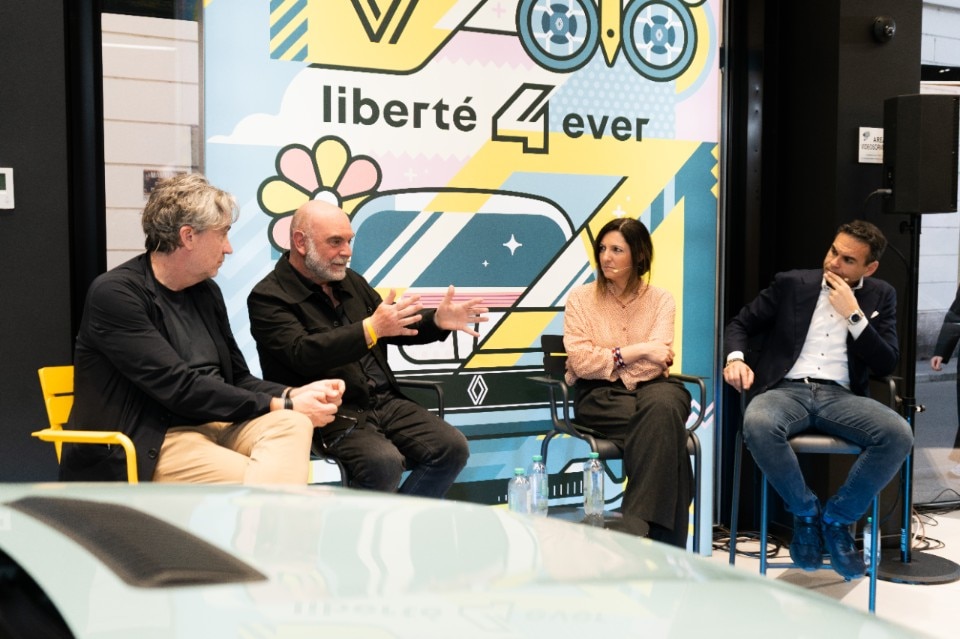
D'arienzo begins with 'seamless' to indicate the set of automotive technologies that will make the car a fully-fledged urban element, capable of dialoguing with the city and its citizens and performing several functions beyond that of a means of transportation.
Floriana Marotta responds by reiterating the importance of the 'identity' of places as opposed to the homogenization and emptying of meaning that inevitably risk emerging from a process with a strong technological drive. Saverino agrees and relaunches the importance of rediscovering the places of 'sociality' thanks to individual behaviors but, above all, to active urban policies.
Walter Mariotti himself concludes with 'city' in its triple Latin translation of urbs - the physical city -, civitas - the city of citizens and institutions - and comunitas - the city of personal and family relationships. Throughout history these aspects have not always gone hand in hand, and aligning them should be everyone's goal.
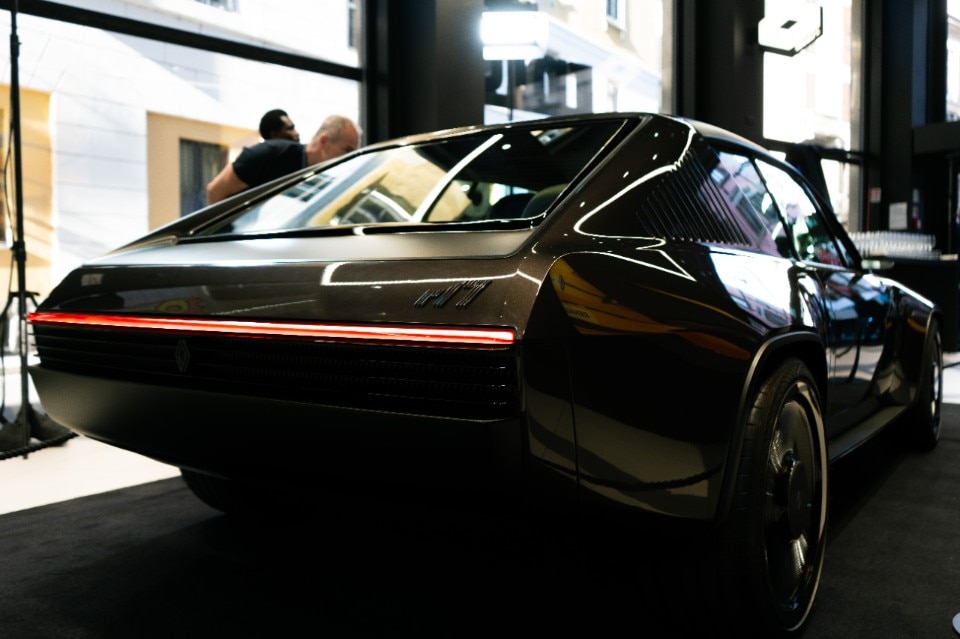
- Brand:
- Renault
- Product:
- Cars
- Web Site:
- www.renaultgroup.com


